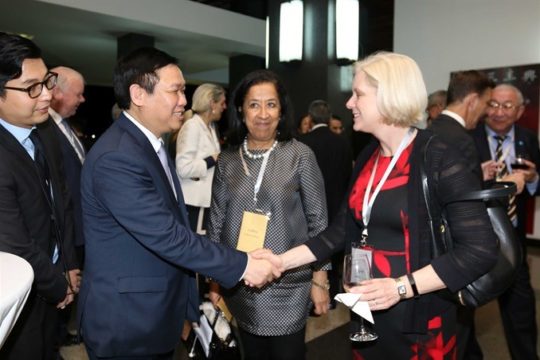We recently spoke to FCLT Global CEO Sarah Williamson following her attendance at the Asia Business Council 2017 Spring Forum in Vietnam, which focused on the need for patient capital and long-term stewardship at a time where there growing recognition among governments and businesses that traditional models are broken, as well as extraordinary pressure from stakeholders calling for the adoption of a longer-term view.
Sarah shared her reflections on the Forum, the current state of long-termism in emerging markets, lessons learned from family companies in Asia, and the highlights of her trip.
Q: Is there a general consensus behind the short term/long-term debate in Asia?
Overall, the companies present at the Asia Business Council Spring Forum tended to be family companies, and inherently long-term as they think about generational issues. They also tend to be very adaptive, given the volatility and growth rates in some of these markets. One person put it that “Asian family companies are so competitive because they adjust constantly but have a long-term vision.”
I also spoke with a business owner who had taken a company public, and now has institutional shareholders from all around the world. His experience was that investor expectations in traditional industries are different, even if investors are also invested in a company like Amazon or another large tech firm with no short-term earnings. As a traditional industry owner, investors expect him to produce earnings consistently each quarter and punish his shares if that’s not the case.
“ Asian family companies are so competitive because they adjust constantly but have a long-term vision.”
Q: How do you see the mission of FCLT Global having an impact in Asia?
Our goals are ultimately practical solutions for asset owners, asset managers, and companies.For companies, we can learn from the successful family companies of Asia. While a large public company can’t turn itself into a family company, it is possible to develop an understanding how similar strategies and tools common to these companies could be applied, such as
- A significant share of the CEO’s net worth tied up in the company for year
- Different provisions for majority and minority shareholders
- Boards that are focused on strategy, and selecting company leadership rather than “check-the-box” compliance.
At the intersection of the various groups, I think we can also find best practices for companies that go public to ensure they don’t fall into the trap of short-termism, including:
- Understanding and segmenting shareholders to attract long-term holder
- Distinguishing between buy side and sell side analysts, rather than considering all of them “investors”.
- Considering various classes of shares and various board structures
At this conference, there were no asset owners or managers, but I’m sure there is work to be done given the relatively new nature of many of the large funds there and the tendency of retail investors to trade rapidly.
Q: Speaking at the Asia Business Spring Forum, what was the primary message you wanted to convey?
The primary message we wanted to convey is that short-termism is a real issue in the West, and that it seems to be increasing in other markets as well. By conducting research and developing practical tools to promote long-termism, we can change the outcome, rather than accepting it as inevitable.
Q: What was the overall highlight of the event for you?
This was my first trip to Vietnam, and I was struck by the combination of past and future in Ho Chi Minh City. I visited the War Remnants museum where the impact of the “American” war was very clear and an important part of the past. But it’s also a very young city, a vibrant city and one that is clearly focused on the future. Its people are optimistic and interested in education. It clearly has a bright future ahead of it if it takes the long-term view to development.
My overall highlight was hearing stories of some very long-term companies and how they had successfully faced challenges. One company had a factory in Vietnam that was caught up in broad riots against foreign owners. However, because this factory had provided opportunities for training and advancement for its employees, the employees protected the factory rather than joining the riots and helped their foreign colleagues to escape safely. As the leader put it, it was not just about providing employment, but providing “quality employment.” That served the company very well over the long term.
